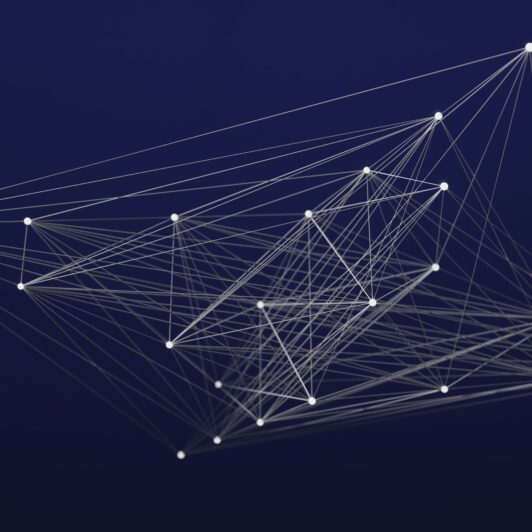The film Apollo 13 made the line “Failure is not an option” famous. In real scientific contexts, including in our work at Two Sigma, failure actually often moves us forward.
By “failure,” we mean, not sloppiness or negligence, but a well‑designed experiment that disproves a hypothesis under sound test conditions. The hypothesis failed, but the method worked. That kind of negative result is valuable: it narrows the search space, saves time, and raises confidence in what remains.
We call ourselves a “financial sciences” company because we apply a scientific approach to investment management—and to just about everything else we do. Below, we share how we design for disproof, iterate quickly and collaboratively, and how a data‑backed “no” can become a long‑term advantage.
Designing for disproof
A hallmark of good science is falsifiability, so a negative outcome still advances understanding. In practice, this means articulating clear hypotheses and being willing either to proceed or pivot when the evidence says so.
Two Sigma researchers rely on elements like high-quality datasets, robust back-testing mechanisms, and sound validation techniques to assess experiment results. Similarly, our engineers scope, build, and rigorously evaluate minimum viable products (MVPs) before committing substantial time to an unproven idea—and only then expand.
“We’ll build a proof of concept and say, okay: this is what we’re thinking,” says Joel, an engineering product manager. “Before we sink six months of engineering time into a project, let’s see if this works. And that gives us a good signal as to whether it’s an investment we should double down on and proceed with. Or, if it’s not worth the cost of engineering time, then we can make the decision to pivot, or kill the project right there.”
Failure is part of it. That’s why it’s research. That’s why it’s science.
As Ben, a senior quantitative research manager, puts it, “Failure is part of it. That’s why it’s research. That’s why it’s science.” Rigor is the point. “We typically have an in-sample of data that we’re studying, and then an out-sample of data that we’ve hidden from ourselves,” he explains. “So we’ll build a model and we’ll do all of our ideas and we’ll train it, and there’s one day where you say, okay: I’m ready to open the out-sample. I’m ready to look and see whether my last month of effort is working in the real world, or at least in a held-off data set. And that’s a big moment for every researcher.”
That process is designed to produce a lot of negative results, before ultimately leading to breakthroughs. As Ben adds, “Sometimes you have to say, well, it didn’t work. I did something wrong, or I overfit, or the world has changed. And that’s a tough part of the job. But other times, when it does work, that’s pretty exciting.”
Iterate quickly, rigorously, together
Failures may seem like they’d inevitably delay forward progress, but that’s not the case. Collaboration helps turn a “no” into momentum. When ideas are shared early and pressure‑tested openly, weak hypotheses get rejected quickly and the next, better question appears sooner.
“Bouncing ideas off each other usually produces more hypotheses we can test,” says Nancy, a software engineer. “And a lot of hypotheses can be rejected pretty quickly.” Pairing and cross‑team reviews help individuals avoid what they might miss alone and, she adds, “definitely, accelerate our process of testing and verifying ideas.”
A common phrase that people use around here is ‘failing fast’
In a scientific culture like Two Sigma’s, the expectation is to move on promptly when the evidence points elsewhere: “A common phrase that people use around here is ‘failing fast,’” explains Euan, an investor relations specialist. “You want to see if the hypothesis is going to work. If not, we need to move on to the next approach or find a new solution.” The key to reaching consensus on such a decision is data.
In practice, quick, collaboratively reached “no’s” shorten cycles, reduce blind spots, and focus energy on the most promising directions—turning the positive aspects of failure into faster progress.
Turning “failure” into long‑term advantage
When you approach work scientifically, a data‑backed no‑go is a positive outcome. It preserves focus, conserves time and resources, and builds trust in the process. And it means being willing to stop—even late in the game—when the evidence points elsewhere.
“At least in my experience here, it is rewarded when you say, ‘I looked into this, here’s my analysis, and I actually don’t think this is the right answer,’” says Risa, who works in corporate management. “When that’s happened, we actually celebrate it as a win. Okay, great. We avoided doing something that wasn’t the right thing for us or for our investors for some reason.”
Culturally, it’s essential to make room for both outcomes and the judgment calls that come with them. The aim is to compound learning, not to defend sunk costs—and in doing so, turn a negative result into knowledge of lasting value.
“One thing I know: if you don’t try it, there’s a guarantee that it will not work,” says Mike, a senior leader overseeing AI researchers. “If you do try it, it may also not work. But at least there’s a chance that it will.”
As we’ve written elsewhere, we favor small, measurable steps (“epsilons”) toward long‑horizon goals (“omegas”); by that standard, a well‑run experiment that says “not this” still moves us closer.
Summing up
Treating failure as data is how scientists find what works: design for disproof, move quickly together, and let evidence guide when to press on or stop. That mindset turns small, well‑run “no’s” into compounding advantage, paving the way for breakthroughs.
If this sounds like the way you like to work, we’d love to hear from you. Learn more, and explore open roles and internships on our Careers page.






